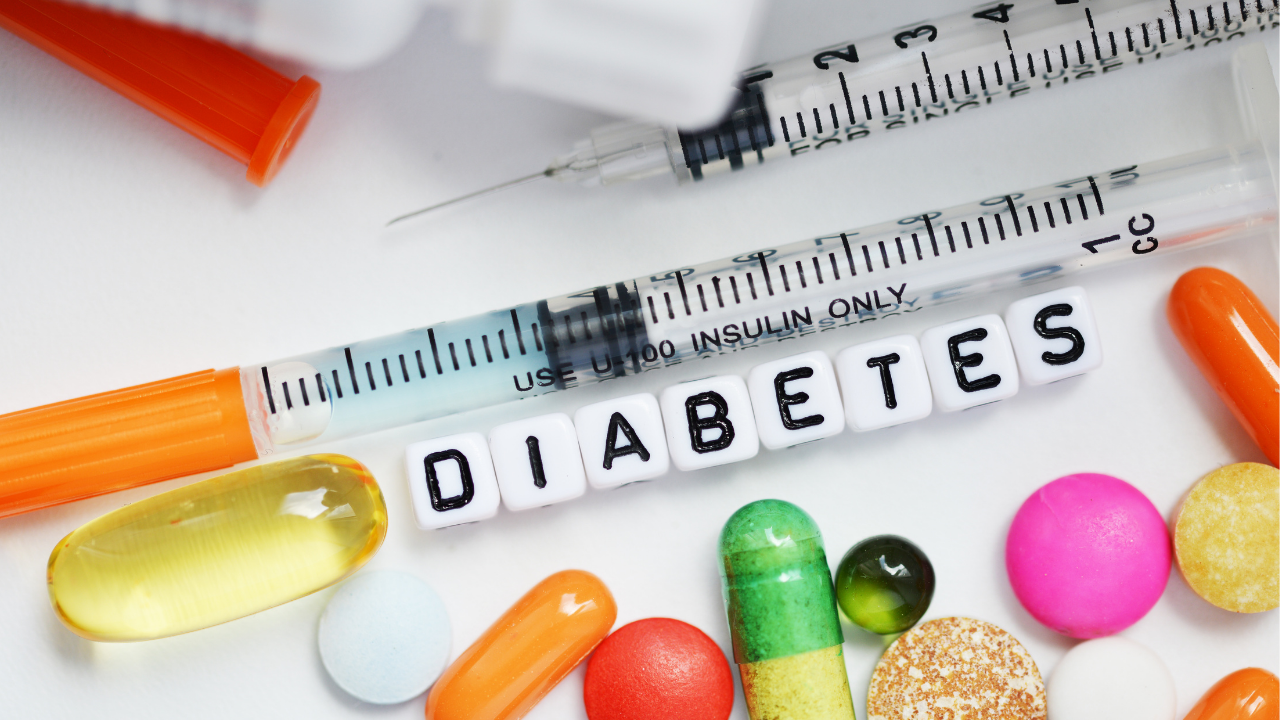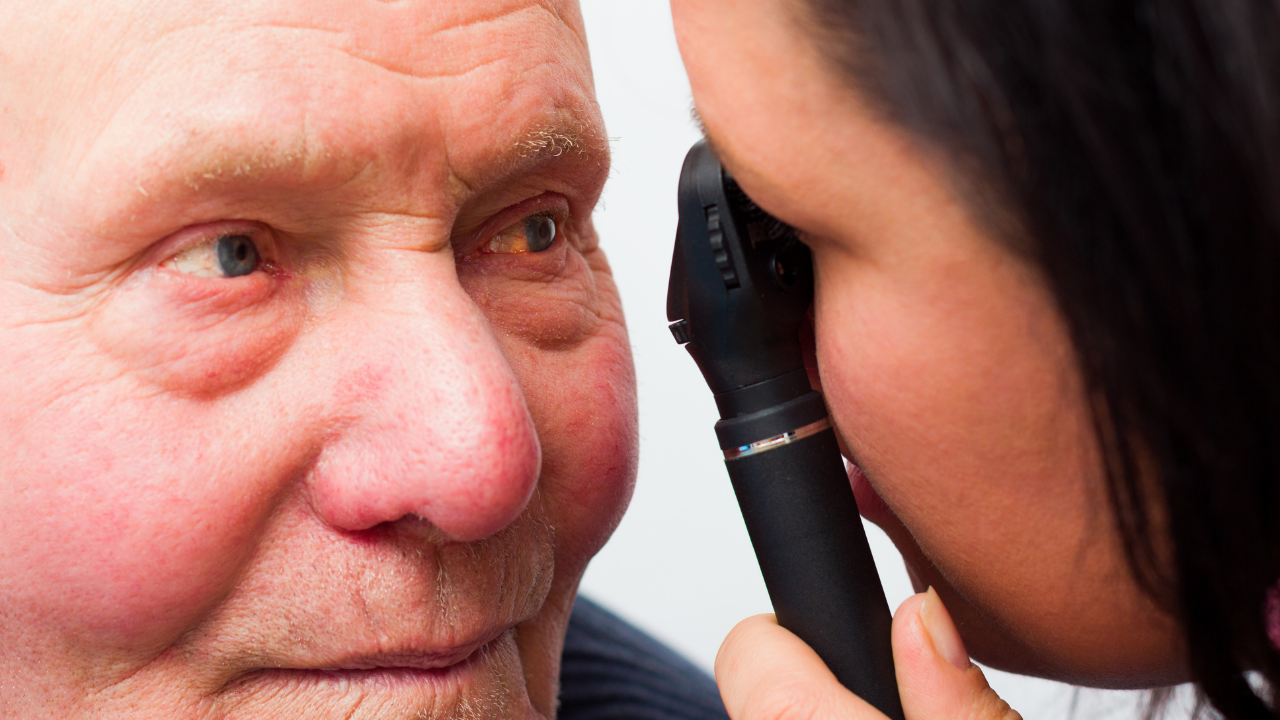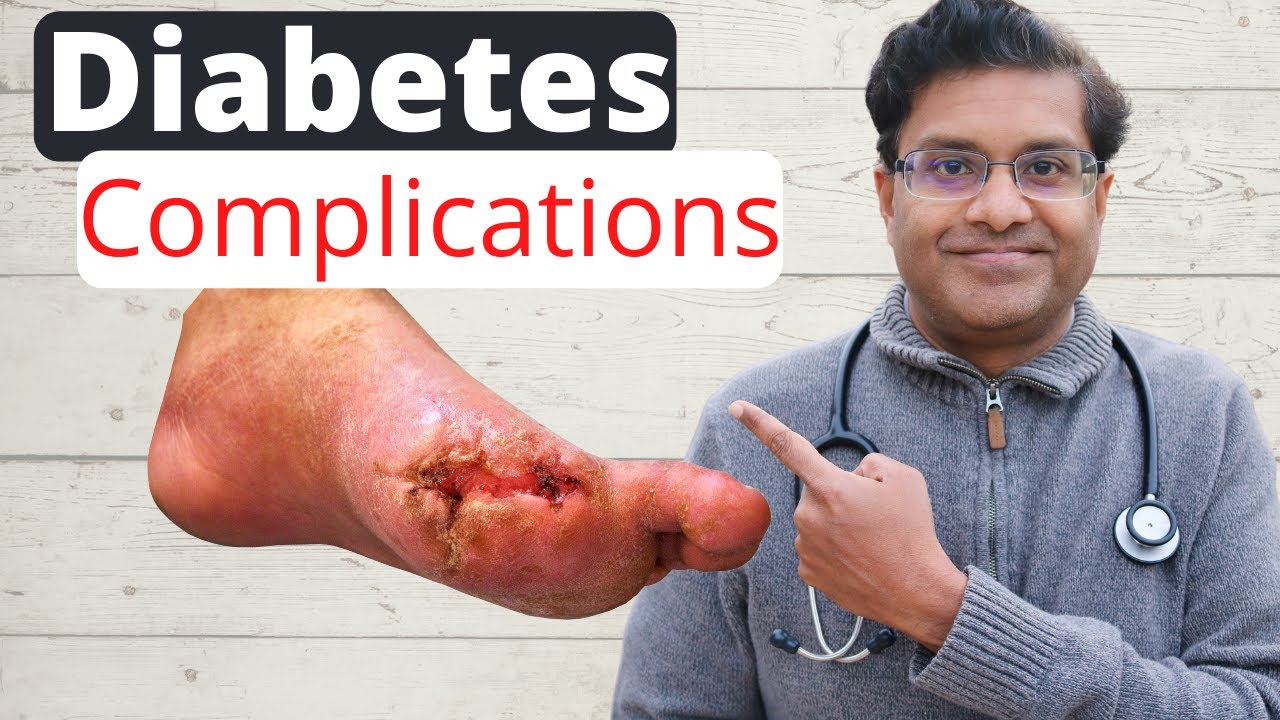Are you a diabetic and wondering what might happen if your diabetes progresses?

Let’s examine 6 common complications of uncontrolled diabetes.
Before I start writing about diabetes complications let me just explain the difference between the 2 types of diabetes: Type 1 and type 2 diabetes.
In type 1 DM your pancreas cannot make Insulin or makes too little Insulin. In Type 2 diabetes the body’s cells do not respond to Insulin or your body cannot make enough Insulin, or it is a combination of both problems I mentioned earlier.
Insulin is a hormone produced by your pancreas and moves the sugar from your blood, like after a meal, into cells where they can be used as energy. You can think of insulin as a key helping glucose into these various cells. Now what happens in DM2 is your body fat cells, liver cells and muscle cells do not respond well to insulin. This is called Insulin resistance. Your pancreas ends up producing more Insulin to try to push sugar into your cells, but it reaches a point when it can’t keep up and there is too much sugar in your bloodstream.
How to diagnose DM? (3 common ways)

I have the units listed used in other countries like the UK in parenthesis.
- If your fasting blood sugar is 126mg/dl or higher
( 7 mmol/l) - If you have symptoms of DM such as fatigue, urinating more, feeling thirsty, weight loss, blurred vision, and a random blood sugar of 200mg/dl or above (11.1 mmol/l)
- If a blood test called HbA1c is 5 percent (48 mmol/mol) or higher. This value measures your average blood sugar in the last 3 months.
If you have been diagnosed with DM or dealing with diabetes it can at times seem overwhelming and frightening. DM is also called a silent disease as you really don’t feel diabetes, but it can lead to serious & life threatening complications.
What are 6 common diabetic complications:
1 – Cardiovascular complications:
If you are a diabetic, you are at an increased risk of cardiovascular disease & its complications. This is because DM affects your larger vessels and your smaller vessels with plaque formation and atherosclerosis. Blood flow & oxygen supply to major organs are affected. This can lead to problems like heart attack, stroke, or even death.
2 – Eye complications:

You are at an increased risk for cataracts, glaucoma, and vision loss. One of the reasons which can lead to vision loss is a condition called diabetic retinopathy where the tiny vessels perfusing the back of your eye are affected, causing them to leak fluid or blood.
3 – Foot complications:
Diabetes can decrease blood flow to the feet and damage the nerves that carry sensation. Because the nerves are damaged because of the lack of blood flow this is called diabetic neuropathy. This can affect the way you perceive pain, and you are at an increased risk of open wounds, fungal infections, foot ulcers and callus formation. You might step on a piece of glass and might not even feel it.
Moreover, If the blood flow to your lower extremities and feet are severely affected and your wounds do not heal, because of poor circulation you are at an increased risk of loss of limb & digits…..yes, I am talking about amputation.
4 – Kidney complications:
Diabetes can harm your kidneys. This is because the blood vessels in your kidneys as well as the tiny blood vessels supplying the filtering units of your kidneys become damaged. Overtime, because of high blood sugars these vessels become narrower and clog up.
5 – Other co-morbidities conditions:
Given that DM is a systemic disease it is associated with many other comorbidities. I will only list them, as this article will become too long, but you should be aware of these conditions: Hypertension, obesity, dyslipidemia, hearing impairment, sleep apnea, fatty liver disease, gum disease, memory problems, depression, eating disorders, anxiety, and fractures.
Although, like DM, you can’t feel hypertension, high blood pressure stresses your cardiovascular system and increases the progression of complications to your eye, kidneys, and brain. In this way diabetes increases your chances of diabetic retinopathy, kidney disease, kidney failure and a stroke.
6 – Diabetic Ketoacidosis: What does this mean?
This condition can happen in Type 1 and type 2 diabetes, but more likely in type 1. Here chemicals called “ketones” build up in your blood and make your blood more acidic. This is because if insulin cannot be made by your pancreas, the body is not able to use sugar. If sugar cannot be used a source of fuel, fat is used instead. Burning fat produces ketones. However, if too many ketones are made it becomes toxic for your body.
THINK your Health and have a good day.Check YouTube video here.
Sources:
2.https://www.cdc.gov/diabetes/







